Backloading Removalists - An Affordable Way to Move
Imagine a moving experience that's not only cost-effective but also environmentally friendly. Intrigued? Welcome to the world of backloading removalists, where savings meet efficiency. Discover how backloading can transform your next interstate move in this eye-opening guide.
13 min read
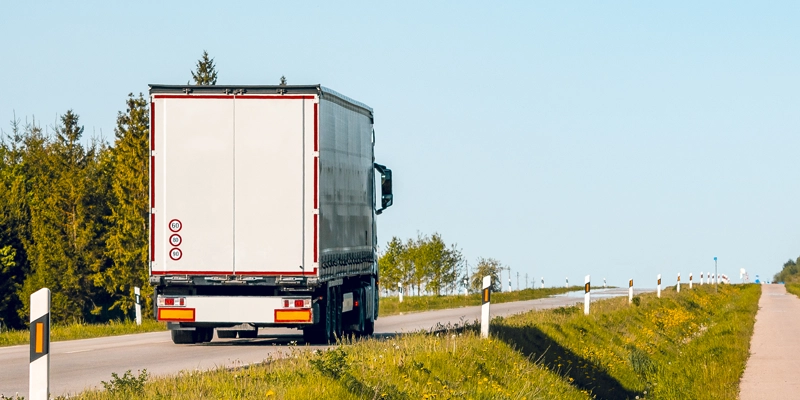
Key takeaways
- Backloading is an economical moving option, leveraging unused truck space for lower costs.
- Flexibility in scheduling aligns your move with the removalist’s existing routes, often leading to better rates.
- Choosing backloading services is an eco-friendly decision, minimising carbon emissions by maximising the use of truck space.
- Efficient packing and thorough planning are essential for a successful backload move.
- Backloading costs are typically based on the volume of goods, not the distance travelled.
- Selecting a reliable and experienced interstate backloading service is crucial for a smooth move.
- Many backloading companies offer additional services, such as packing, storage, and insurance options, for enhanced convenience.
Picture this: You’re planning a move, and the quotes from removal companies are giving you sticker shock. You’re wondering if there’s a less expensive, yet reliable solution. Enter the world of backload removalists, a concept that offers a cost-effective and eco-friendly alternative to traditional moving services. In this comprehensive guide, we'll take you on a journey through the world of backloading, unravelling its mysteries, and showing you how it can be your moving game-changer. So, fasten your seatbelt (or packing tape), because you're about to discover the key to a more cost-effective solution to interstate moves.
What is Backloading?
Backloading is a smart and efficient way to transport your belongings when moving from one place to another. Unlike traditional removalist services that involve dedicated trucks for individual moves, interstate backloading involves securing the unused space on the back of a truck that's not yet being used to carry someone else's items.
A backloading service might require some flexibility regarding your pickup and delivery schedule as well as sharing the truck space with others, but the trade-off is substantial cost savings compared to booking a dedicated removal service. It's like carpooling for your possessions!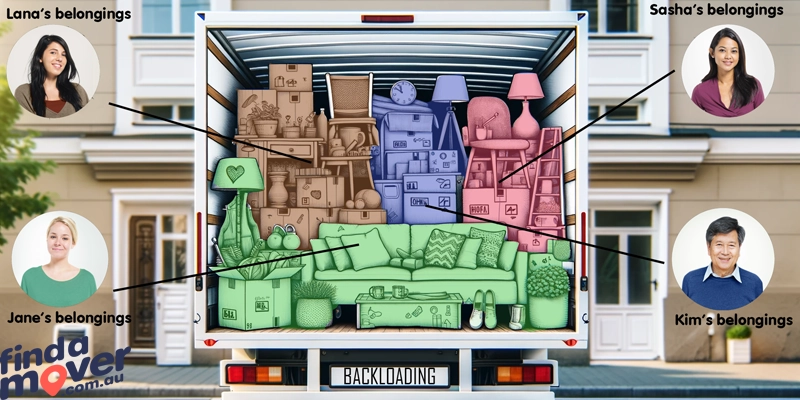
Here's the magic: when interstate removalists deliver a load to its destination, the truck usually heads back empty. Backloading allows you to utilise that empty space by booking a backload usually at a great price and at a fraction of the normal cost, effectively sharing the transportation costs with others. It's a win-win situation for both customers booking interstate backloads and professional interstate removalists for carrying a full load on their return trip.
But backloading is more than just a cost-saving strategy. It's an opportunity to reduce the carbon footprint of your move by optimising the use of existing resources. Plus, it's a practical solution for smaller moves or if you're flexible with your moving dates.
In the next section, we'll delve deeper into how backloading works, so you can grasp the mechanics of this commonly embraced approach to moving.
How backloading works
So, you now have a grasp of what backloading is, but how does it actually work? Let's demystify the process step by step.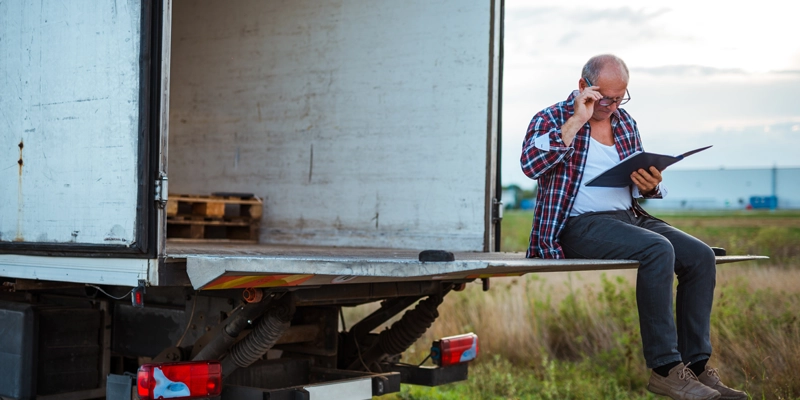
- Booking a slot: The first step in backloading is finding a removalist who offers this service. Most interstate furniture removals provide backloading options. Once you've identified a suitable provider, you'll need to book a slot on a truck that's already scheduled to travel your way or in the return direction.
- Flexible scheduling: As we mentioned earlier, flexibility is key to backloading. You might need to adjust your pickup and delivery dates and times to align with the truck's existing route. This flexibility is one of the reasons interstate backloading is cost-effective, as it allows removalists to optimise their trips.
- Packing your belongings: Just like any move, proper packing is crucial. Make sure your items are well-packed and more importantly well labelled for easy identification. Don't forget to secure fragile or valuable items to prevent damage during transit.
- Loading and transit: On the scheduled day, the removalist will arrive to load your items onto the truck along with other backloaded goods. The truck will then hit the road, making stops along the way for pickups and deliveries.
- Shared space: Here's where the magic of backloading happens. Your belongings share the empty truck space with other customers' items, effectively splitting the transportation costs. This shared approach significantly reduces the cost of your move.
- Arrival and unloading: Once the truck reaches your destination, your items will be unloaded along with the others. Ensure you're present to receive your belongings and inspect them for any possible damage during transit.
- Cost savings: The beauty of backloading is in the savings. Since you're sharing the truck's space with other customers, your moving costs can be significantly lower compared to booking a dedicated truck for your move.
- Eco-friendly: With backloading, you're not only saving on costs but also reducing the environmental impact of your move by optimising truck space and minimising trips.
In the next section, we'll delve deeper into the benefits of choosing backloading specialists, shedding light on why it's a practical choice for many.
Benefits of booking a backload
Now that we've walked you through the mechanics of backloading, it's time to explore the many advantages this approach offers. Here are some key benefits of choosing backloading removalists:
1. Cost-effective: Perhaps the most enticing aspect of backloading is the potential for significant cost savings. By sharing truck space with others, you can split the transportation expenses, making it an economical choice for both short and long-distance moves.
2. Environmentally friendly: Backloading is not only easy on your wallet but also gentle on the environment. By maximising the use of existing resources, such as partially filled trucks on return journeys, backloading reduces the carbon footprint of your move.
3. Efficient use of space: Interstate backloading ensures that available truck space is put to good use. Rather than sending half-empty trucks on the road, backloading helps professional removalists optimise their trips and reduce wastage.
4. Ideal for smaller moves: If you're not moving an entire household and have a more modest load or require moving furniture interstate then backloading removal services are an excellent fit. It's a practical solution for singles, couples, or anyone with a smaller inventory.
5. Flexibility: While flexibility is required to accommodate the truck's schedule, it also works in your favour. You can often secure a backloading slot even if your preferred moving dates aren't set in stone.
6. Reduced stress: Knowing that you're saving money and contributing to a greener move can alleviate some of the stress that often comes with relocating. Backloading can make your move smoother and more enjoyable.
7. Professional removal service: Interstate backloading removalists are experienced in managing shared truck space efficiently. They are skilled at coordinating multiple pickups and deliveries, ensuring your belongings arrive safely.
8. Availability: Since backloading is a common practice among removalists, it's generally easier to find available slots, especially during peak moving seasons when booking a dedicated truck may be challenging.
In the next section, we'll guide you through the process of selecting the right backloading removalist to ensure a successful move.
Choosing the right backloading removalist
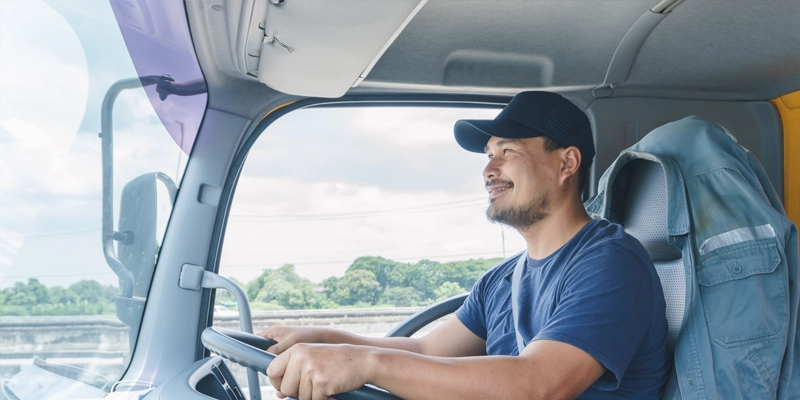 Now that you understand the benefits of backloading, it's time to navigate the process of selecting the right backload removalist for your move. Here are some tips and considerations to help you make an informed choice:
Now that you understand the benefits of backloading, it's time to navigate the process of selecting the right backload removalist for your move. Here are some tips and considerations to help you make an informed choice:
- Start by researching removalists in your area that offer quality interstate backloading services. Take the time to compare their services, pricing, and customer reviews. Look for companies with a strong track record in backloading.
- Many removalists on Find a Mover also offer an interstate removals backloading service. Simply list a job to receive quotes from several removalists to get a sense of the cost involved. Be sure to provide accurate details about where you're moving to, and the move size by filling in the inventory to receive accurate estimates.
- Verify the credentials of the removalist, including their licenses, insurance coverage, and Australian Business Number(ABN). Reputable removalists should be fully licensed and insured.
- Customer reviews and testimonials can provide valuable insights into the quality of a removalist's service. Look for feedback from customers who have used their removal services.
- Inquire about estimated pickup and drop off windows, and transit times for your move. Choose a company that can provide a definite expected duration window for pickup and drop off of your belongings.
- Pay attention to the removalist's communication style and responsiveness. A reliable removalist should be easy to reach and provide clear answers to your questions.
- If you have unique items such as antiques, pianos, or fragile items, ask if the removalist offers specialised packing and handling services for these items.
- Discuss insurance options with the removalist to ensure your belongings are adequately covered during transit. Understand the terms and conditions of their insurance policy.
- Clarify payment terms, including deposits and the final payment schedule. Make sure you are comfortable with the payment arrangements before confirming your booking.
- Assess the level of customer support provided by the removalist. A responsive and helpful customer support team can make your move more seamless.
By carefully evaluating these factors and doing your due diligence, you can choose a backloading removalist that aligns with your needs and ensures a successful and cost-effective move. In the next section, we'll guide you through the essential preparations for your backload move.
Preparing for a backload move
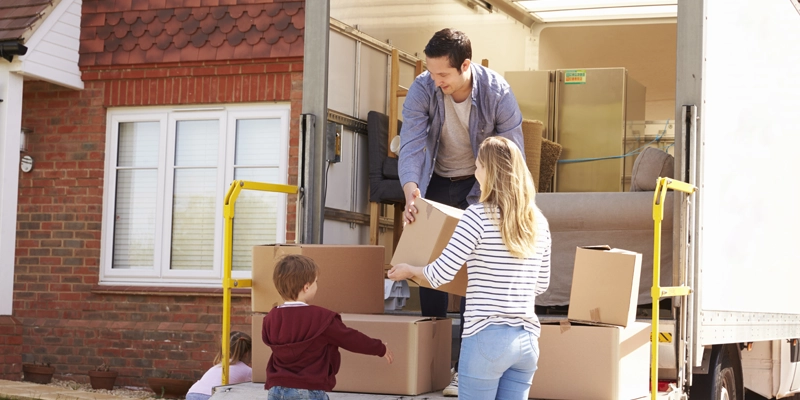 Preparing for a backload move requires a balance between standard moving practices and additional considerations unique to the nature of backloading. Particular emphasis on flexibility, efficient packing, clear communication, and a good understanding of the logistics involved will help mitigate the challenges specific to backload moving.
Preparing for a backload move requires a balance between standard moving practices and additional considerations unique to the nature of backloading. Particular emphasis on flexibility, efficient packing, clear communication, and a good understanding of the logistics involved will help mitigate the challenges specific to backload moving.
Preparation for a backload move involves:
- Inventory and declutter: Like any move, start by inventorying and decluttering your belongings. This helps in estimating the space needed and reduces moving costs.
- Packing and labelling: Efficient packing and clear labelling of boxes are universal moving steps. For backload moves, this is even more crucial due to the potential for multiple stops and mixed loads.
- Insurance and liability: Ensure your items are covered by insurance, a critical step in any moving process, but especially important in a backload move where your items share space with others, there is the potential of misplacement.
Pay extra special attention to:
- Scheduling flexibility and coordination: Be prepared for less control over the moving dates. Your move will align with the primary job of the moving truck. This requires more flexibility and frequent coordination with the moving company.
- Understanding space limitations: Know exactly how much space you're allocated in the truck. This can influence how much you can take with you and may require more selective packing. Understand that if you exceed your allowance, there may be additional costs.
- Cost quotations: When obtaining quotes, understand that costs are based on space used and distance travelled. This differs from dedicated moves where the entire truck space is considered.
- Loading and unloading efficiency: Your belongings might be loaded or unloaded alongside other loads. Packing strategically for efficient loading and unloading becomes more important and remember to check off that you've received all your items before allowing the removalist to leave.
- Communication and updates: Maintain ongoing communication with the moving company. Given the nature of backload moving, staying informed about the truck's schedule and when it's on the way for pickup is key.
- Flexibility with delivery timing: The delivery of your belongings might not be as predictable as with a dedicated service. Be prepared for potential delays or early arrivals.
- Potential for transhipment: Understand if your items will be transferred to another truck at any point, as this is more common in backload moves. This could impact how you pack and protect your items.
Maximising your backloading experience
If you want to have a good backloading experience, the key is strategic planning, flexibility, and effective communication. By also optimising your packing methods, accurately estimating the space needed, and skillfully coordinating your moving dates, you can set yourself up to enjoy a good overall backloading experience. Here's what you need to keep in mind:
Plan strategically
Strategic planning involves prioritising the essential items for easy access. If needed use space-saving techniques like vacuum bags for clothing and bedding to maximise the space allocated and plan the load order based on item importance and fragility. Part of backloading is leaving the control of pickup and delivery times in the hands of the moving companies so it's important to keep in touch with the removalist about any changes to the schedule or anything that may throw off the plans.
Estimating the backloading space required
There are a few things you can do to estimate the backloading space you require for your move:
- Create a detailed list of items to move with the use of an inventory list. This helps in estimating the volume required.
- Consult with the removalist to assess the space needed based on your inventory. Ask if they have an inventory calculator or use Find a Mover's inventory calculator.
- Use measurements or visual aids to grasp the actual space you need by working out the cubic metres required.
- It's also best to add 10% to your estimate to be on the safe side. It's better to overestimate than underestimate and add to a whole new set of problems if the removalist doesn't have the space you require.
Coordinating your moving date with backloading options
Having a good overall experience also depends on the success of coordinating your moving date with the backloading options you have on hand. Be flexible with your moving dates, as backloading depends on the mover’s primary schedule so planning ahead is key. Stay in regular communication with the moving company to stay updated on their schedule and potential openings. By doing so, you can optimise your moving experience and ensure a smooth transition.
Potential challenges and solutions
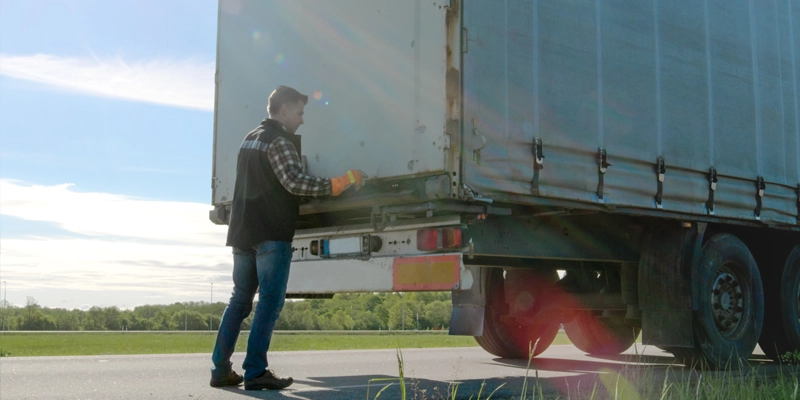 In backloading, you may encounter unique challenges. Understanding these pitfalls gives you the chance to address these effectively if and when these challenges do arise so that you can apply countermeasures to keep the move on track.
In backloading, you may encounter unique challenges. Understanding these pitfalls gives you the chance to address these effectively if and when these challenges do arise so that you can apply countermeasures to keep the move on track.
Scheduling uncertainties
Backload moves depend on the primary job's schedule, which can change. The solution is to maintain regular communication with the removalist providing the backloading service and have a backup plan for potential date shifts.
Safety and security of items
The shared space in the truck can raise concerns about item safety. The solution may be to use quality packing materials and ensure items are securely packed. Another is to discuss insurance options with the removalist or even carry out insurance through a third-party insurance provider.
Unclear communication
Misunderstandings can occur, especially regarding space allocation and timing. An easy solution is to establish clear, ongoing communication channels. Provide detailed inventory lists and confirm all arrangements in writing.
Space and weight limitations
The space you get in a backload move is often limited. The solution is to be precise in estimating the volume of your belongings and declutter to reduce the load.
Load mixups
Your belongings will share space with others, which might increase the chance of mix-ups or damage. Proper and clear labelling of your items and boxes can just be the solution otherwise consider using GPS tracking for valuable items.
By anticipating these challenges and preparing solutions, you can navigate the backloading process with confidence and ease.
Environmental benefits of backloading
As mentioned earlier in the article, backloading stands out not only for its cost-effectiveness but also for its environmental friendliness. This eco-conscious approach to moving capitalises on existing transport resources, significantly reducing the carbon footprint associated with relocation. The benefits include:
- Reduced carbon emissions: By utilising space in trucks already on the road, backloading cuts down on the number of vehicles required, leading to lower carbon emissions.
- Decreased road traffic: Fewer moving trucks on the road mean less congestion and associated environmental impact.
- Resource efficiency: Maximising the use of available space in trucks promotes a more efficient use of resources, reducing the need for additional fuel and vehicle usage.
- Minimising waste: Backloading contributes to a culture of resourcefulness, encouraging the efficient use of space and discouraging wasteful practices.
By choosing to backload, customers not only benefit from discounted or cheaper prices but also contribute to a greener, more sustainable way of moving.
Understanding backloading costs
Costs per cubic metre
In backloading, pricing primarily depends on the volume of your belongings rather than the distance travelled. This model is particularly advantageous if you are moving fewer items. For instance, relocating a couple of furniture pieces or a few boxes will cost less compared to moving an entire household's contents, even if the distance is the same. This pricing method reflects the efficiency and flexibility of using available truck space effectively.
Flexibility discount
Flexibility with your moving date can significantly affect the cost. Backloading prices are lower when your move aligns with the removalist's existing schedule, such as filling empty space on a return trip. For example, if you're willing to move on a day when a truck is already scheduled to return empty from another job, you might get a reduced rate. This flexibility is a key benefit of backloading, allowing both the customer and the removalist to capitalise on the available space and schedule.
Additional charges
While backloading offers base cost advantages, there are potential additional charges to be aware of. These may include services like professional packing or extra fees for challenging conditions, such as moving items from or to locations with difficult access. For instance, moving items from a fifth-floor apartment without elevator access might incur additional labour costs. Understanding these potential extra charges is crucial for budgeting your move accurately.
Seasonal cost fluctuations
The cost of backloading can fluctuate based on the time of year. Demand for moving services tends to peak during certain times, like summer or the end of the month, leading to higher costs. For example, a move scheduled during the busy summer months might be more expensive than the same move in a quieter season like winter. Awareness of these seasonal pricing trends can help you plan your move for a more cost-effective period.
Comparing backload quotes
When evaluating backloading quotes, it’s essential to compare like with like. Make sure that each quote includes similar services to ensure a fair comparison. For example, a lower quote might seem attractive, but it may not cover services such as packing or insurance, unlike a slightly higher but more comprehensive quote. Paying attention to the details in each quote will help you make an informed decision based on both cost and value.
Additional services
In addition to the basic transportation of goods, interstate backloading removalists often provide a range of supplementary services that can further ease your moving process:
- Packing assistance: Many backloading companies offer professional packing services to ensure your belongings are safely and efficiently prepared for transit.
- Storage solutions: If you need to store items before, during, or after your move, many backloaders provide secure storage options.
- Special handling: For items that require extra care, like pianos, antiques, or artworks, specialised handling services are available.
Final thoughts
As we wrap up this comprehensive guide, remember that backloading offers a unique blend of affordability, flexibility, and eco-friendliness. From choosing the right removalist to understanding the nuances of pricing, we've covered everything you need to make an informed decision. Backloading isn't just about saving money; it's also about contributing to a more sustainable world. So, why not consider backloading for your next move? It's a smart, efficient choice that aligns with both your budget and your values. Give it a try and experience the benefits firsthand!
Ready to Move? Find Your Perfect Mover!
Don't let moving stress you out. Compare quotes from our network of reliable movers, read genuine reviews, and book with ease. Save time, save money, and start your move with confidence today.
- Quickly compare movers
- Read verified reviews
- Book online with confidence
